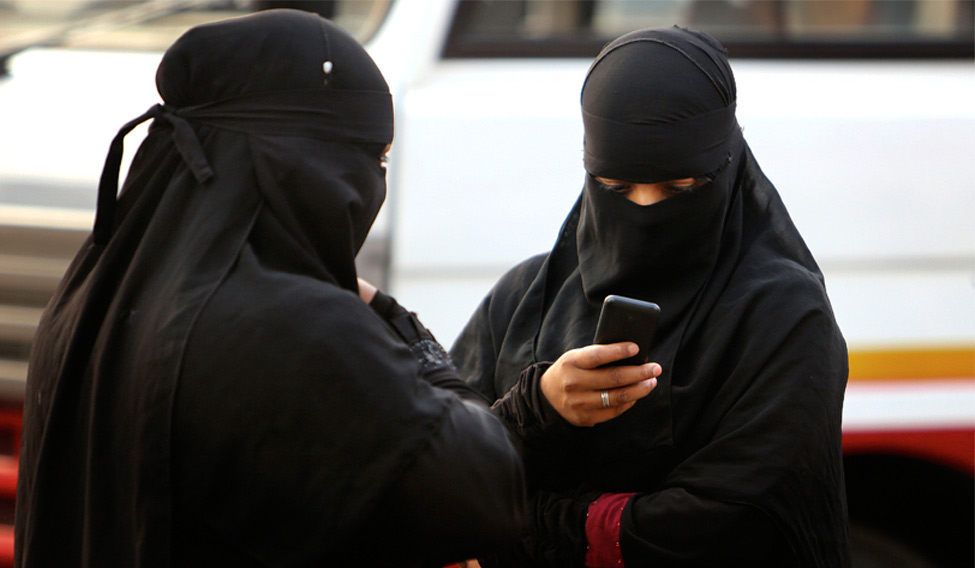In a much-awaited verdict, the Supreme Court on Tuesday, imposed a six-month stay on instant triple talaq, and asked the government to come up with a legislation. Muslim law should be considered while formulating the new law, the apex court ruled.
The verdict was passed by a bench of five judges, each from a different faith—Chief Justice of India J.S. Khehar (Sikh), U.U. Lalit (Hindu), Kurian Joseph (Christian), R.F. Nariman (Zoroastrian) and S. Abdul Nazeer (Muslim). The bench looked at petitions filed by Muslim women challenging the controversial practice of triple talaq in which a husband can divorce his wife by simply uttering the word 'talaq' thrice. Sometimes, this has even been done over the phone, letter or even text message. The petitioners argued that the practice is unconstitutional.
Here's a timeline of the controversial case and its rulings.
October 16, 2015: While hearing a different case, a two-judge bench requested the Chief Justice to suo motu set up a bench to examine discrimination against Muslim women, especially in divorce. The case picked up with many Muslim women filing petitions.
February 5, 2016: SC asks Attorney General Mukul Rohatgi to assist it on the pleas challenging the constitutional validity of triple talaq, nikah halala and polygamy. Later in March, the SC asks Centre to file a copy of the high-level panel on 'Women and the law: An assessment of family laws with focus on laws relating to marriage, divorce, custody, inheritance and succession'.
June 29, 2016: A bench comprising Chief Justice T.S. Thakur and Justice A.M. Khanwilker said divorce through triple talaq among the Muslim community is a "very important matter affecting a large section of people" which has to be tested on the "touchstone of constitutional framework". On September 2, the All India Muslim Personal Law Board (AIMPLB) tells the SC that personal laws cannot be re-written in the name of reform.
October 13, 2016: The Centre opposed in the Supreme Court the practice of triple talaq, ‘nikah halala’ and polygamy among Muslims and favoured a re-look on grounds like gender equality and secularism. This is the first time a government has taken a stand on the issue.
March 30, 2017: Supreme Court refers the case to a five-judge constitutional bench, and orders hearing from May 11.
April, 2017: Before the hearing begins, the case picked up a lot of mileage with political parties pitching in with their comments. At the BJP national executive meet, Modi asked workers to support Muslim women who want to fight triple talaq. Uttar Pradesh Chief Minister Adityanath said politicians maintaining silence on the subject were as guilty as those practising it, and compared triple talaq to the disrobing of Draupadi in Mahabharata. Congress accuses the BJP of politicising the issue for vote bank. Meanwhile, the AIMPLB said men who misuse triple talaq and use it arbitrarily without any valid reason will be subjected to social boycott.
May 11, 2017: Hearing in the case begins. SC said it would not examine the Islamic custom of polygamy while hearing petitions challenging triple talaq.
May 15, 2017: Attorney general Mukul Rohatgi told Supreme Court that Centre will work toward bringing a new law to regulate marriage and divorce among Muslims, if triple talaq is declared as unconstitutional
May 17, 2017: The Supreme Court asked the AIMPLB if it is possible to give women the right to decline instant triple talaq.
May 18, 2017: The AIMPLB informs the Supreme Court that it has decided to issue an advisory to Qazis to give an option to Muslim women to opt out of instant triple talaq before giving consent for nikaah (marriage).
Hearing concludes. Supreme Court reserves its verdict.





